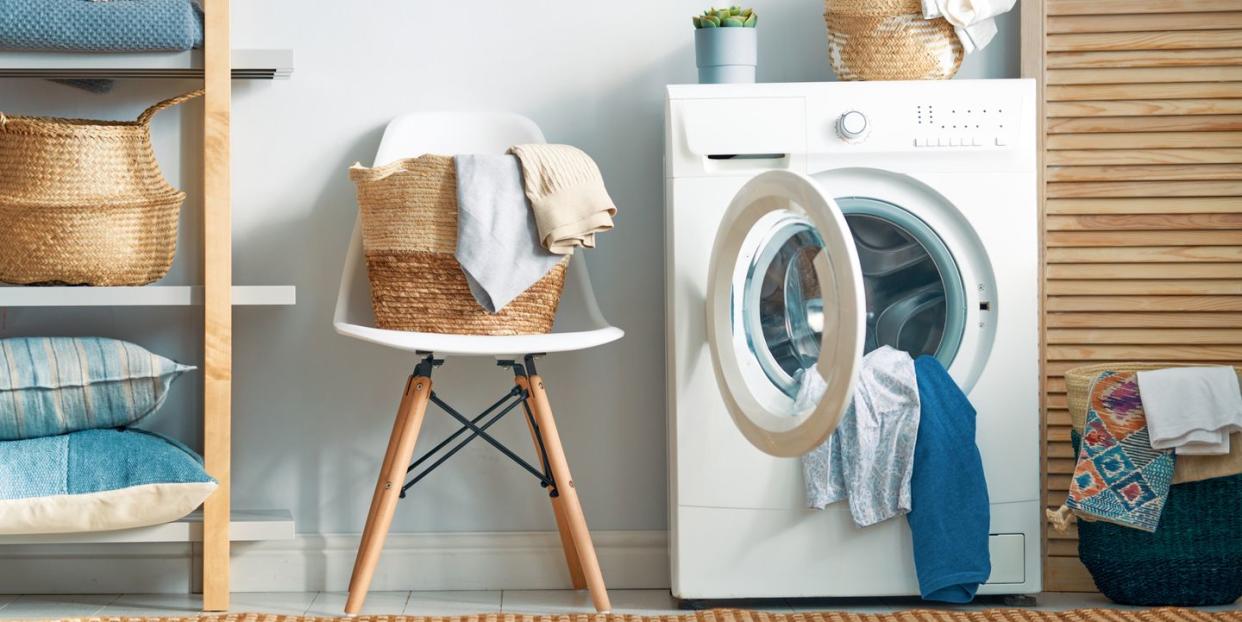How to dry laundry quicker with the GHI's top-rated products

This spring the weather has been anything but consistent. In-between hot and sunny spells, we’re facing heavy downpours. Not only does this take its toll on outdoor excursions, it creates problems at home too; namely, slow-drying, musty laundry.
When we hang our clothes to dry indoors, the lack of sunshine and ventilation slows down the drying process, giving bacteria a chance to form. The result is laundry which can linger for days at a time before fully drying, often causing it to have a musty smell.
Thankfully, with the right method and products, as recommended by the GHI, you can speed up the indoor drying process, and improve the smell of your clothes at the same time. Here’s six tips to get you started.
Reduce the load
If you're working through a pile of dirty washing, it can be tempting to try to fit as much laundry into the drum as you can.
But squeezing too many clothes into the machine can leave clothes damper and more creased at the end of the cycle — which will mean a longer drying time and more ironing.

Invest in the best!
If you need to dry clothes indoors, it's a good idea to invest in a decent clothes airer. To speed up the process, you may want to upgrade to a heated clothes airer, especially if your house is particularly cold. They're speedier than manually air drying and more cost effective than putting the heating on or turning on the tumble dryer.
The GHI put a range of market-leading models to the test, seeing how quickly they dried clothes, while monitoring their electricity usage too. These are some of the top-rated buys:
GHI Tip: Remember that damp clothes should not be dried on storage heaters or convector heaters as this can be a fire hazard.

Spread it out
It may sound obvious, but the more you can spread your clothes out on airer (or the washing line on a dry day) the more it will reduce drying time and the risk of damp smells. Hanging each piece out properly will also help stop your laundry from ending up creased.
GHI Tip: Look out for gadgets to help you spread the load and dry it quicker like this useful peg dryer that sits on your heated clothes airer and helps separate socks or underwear.
Be sure to check for rogue items that have made their way inside other items — like pillowcases inside duvet covers! Buttoning up your duvet cover before washing it can prevent items from being enveloped inside it.
Dehumidify
If you dry clothes indoors, all that extra moisture can lead to damp in your home, unless you keep the windows open for increased ventilation. But, that’s not always an option, especially where you’re dealing with allergies in the springtime, so it’s worth looking at a dehumidifier.
Our experts rate the Princess 20L dehumidifier, which proved the most effective at drying laundry in our lab tests. When on laundry mode, it extracted 85% of the water from our clothes. It is a fairly large machine but is suitable for spaces up to 30 metres squared, connects to an app so you can control it from your phone, and it also has a fan mode for warmer weather.
Save the creases
You may think that setting the washing machine to as high a spin speed as possible is the way to cut drying time.
This is true if you’re putting the load straight into the tumble dryer, as you need to remove as much water as possible to reduce drying time. But if you’re leaving clothes to air dry, you should reduce the spin speed slightly to stop the laundry load from getting over-creased; otherwise, what you save in drying time, you’ll add in ironing time. Remember to remove and shake it all out as soon as the cycle has finished. This helps to open and fluff up the fibres, softening the laundry.
When you do use your tumble dryer...
...be careful not to overload it. It won’t be effective and can put pressure on the motor. Also, make sure that it is in a warm, dry room as tumble dryers suck in the surrounding air, so if it is in a cold garage it will have to work harder than if it was indoors.
You'll find the GHI's top-performing tumble dryers below, and if you want to maximise your tumble dryer's performance, we've also included some tried and tested dryer balls. Placed in the machine, they help prevent laundry clumping together as it tumbles, speeding up the drying process. Some, like our experts' pick below, also use heat reflecting tech to help reduce tumble drying times further.
Stick to using the sensory setting if your tumble dryer has one (most modern machines do). This adjusts the time of the cycle based on the moisture remaining in the load. This means it won’t over-dry, which wastes energy and time, and can damage the items. If items still feel a little damp after the program has finished, hang them to air dry for the final stages before storing.
You Might Also Like


